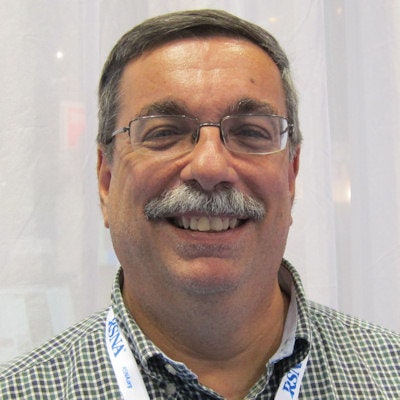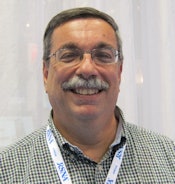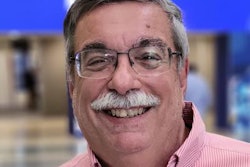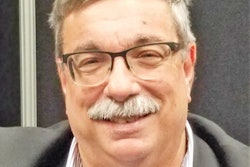
CHICAGO - As I roamed the floor of RSNA 2019, two things crossed my mind. One is that I am getting too old for this -- the knees and feet don't carry the extra weight on my "athletic" frame as easily as they did in years past.
Two was the words "lipstick on a pig" that resonated in my head each time I looked at a product in the booth. Yes, nearly every vendor showed improvements to their systems, but earth-shattering? Not hardly.
Were I not coming to Chicago for full review of the artificial intelligence (AI) market segment, I could have read the "ubiquitous" press releases (more on that later) and stayed 40° warmer. But AI called out my name and didn't disappoint, at least in terms of providing fodder to write about.
RSNA 2019 was all about AI. Now if we only could make heads or tails of what is and isn't AI, it would have made writing about it much easier.
Sadly, many exhibitors at RSNA 2019 used AI as a buzzword, with "true" AI, AI-empowered, AI-defined, AI this, and AI that all over the floor. Was it real? Most of it was. Was it usable? Between 25% and 50% was, at least from a clinical standpoint.
The remainder, where a company had no U.S. Food and Drug Administration 510(k) clearance or CE Mark certification, made me wonder why they even showed up. All they did was add to the smoke and mirrors that are pervasive in a show whose acronym may very well stand for Real System Not Available.
 PACS consultant Michael J. Cannavo.
PACS consultant Michael J. Cannavo.It's even more scary when you have a major PACS vendor demonstrating AI software on a workstation in the booth that doesn't have a 510(k) clearance and then only after the fact when it is brought to their attention, shares that the AI software being shown was in fact evaluated out of the country -- without noting that fact in their display. Craziness for sure.
Nearly all of the majors I visited at RSNA 2019 had some element of an AI solution. But, with few exceptions, most were what you could consider "works-in-progress" and not ready for prime time. Many, but not all, also were integrated with the imaging modalities to provide a value-add for modality sales.
The biggest opportunity that many companies continue to fail to capitalize on is showing how their products and services can address the needs of the end users. They are not shy to explain how they do this and this and this, but they seem to fail to show how these and those can solve my problems. Sharing solutions, not just products, continues to escape the mouths of babes, many of whom were born after I attended my first RSNA show.
It was good to see some companies that started out in years past in a 10 x 10-ft booth grow to a booth size that rivals the majors. Are large booths necessary though? Not really, as 90% plus of all demonstrations at the show are scheduled in advance and you have a good idea of how much space will be needed.
Still, a large booth size tends to be interpreted by buyers as reflecting the financial viability of the company. Several companies also scaled down their booths this year, which just means they got smart.
As I looked at the vendor-neutral archive (VNA) offerings, I thought a lot about AI. Is AI going to go in the same direction of VNA? Hopefully not. VNAs held great promise for hospitals and health systems, yet for the large part they were still promoted to radiology for radiology use.
Yes, VNAs had the capability of storing data from multiple clinical systems, but the reality is the vast majority of VNAs in use today are merely radiology archives and not used for other clinical systems.
Perhaps the term alone -- vendor-neutral archive -- was confusing. It makes it sound like a VNA's only use is to act as an archive between different PACS/enterprise imaging system vendors and not the full capability a VNA has to act as a repository for different clinical systems. Perhaps clinical (or central) data repository (CDR) would have been much clearer from a definition standpoint.
More importantly, the messaging relating to VNAs needed to be aimed outside radiology -- at the chief information officer/chief technology officer (CIO/CTO) level and had it be owned and operated by the information technology (IT) department.
Is it now? With very few exceptions that I have seen, for the most part, the answer is no. A VNA in many sites is simply an overpriced archive. Will a VNA help a facility as it migrates data to a different PACS down the road? Absolutely.
But most facilities looking at a VNA go into sticker shock looking not just at the VNA prices by the cost (and time) required to migrate the data in its proprietary form from their existing PACS-centric archive to a VNA, they often lose data in the process as well.
Vendors selling and servicing VNA should get back in touch with the end users and help them expand their VNA to include other clinical systems and eliminate the plethora of independent storage silos that exist with a facility and the VNA be a part of IT versus radiology.
So what does this have to do with AI? We need to make sure that the use of AI is promoted properly to the users of the technology so that everyone understands the value it has.
Correct messaging is crucial. Right now the vast majority of AI messaging is aimed at radiologists. While these are the users of the technology, they are not the PURCHASERS of the technology -- hospitals are. So messaging has to go to the hospitals or their parent organization as well.
Is this being done now? Few companies even consider the C-suites in their AI messaging. Because of this, they might face the same challenges that VNAs had. AI, like VNA, is a multilevel sale with messaging that needs to be specific to the end user being addressed.
Sadly, several of the representatives of radiology groups up here were mid- to late-50s radiologists who commented more than once at the show, "I'm retiring in a few years. Let the younger guys figure AI out." Sigh. Hopefully, they will.
And now on to the PACSMan Awards:
The Scrabble Award
To the folks who write the RSNA press releases, be it an agency or even internal folks. I swear their thesauruses (thesauri?) are well worn coming up with big words and concepts like paradigms, proliferation, future-proof, future-powered, pressing trends, and my personal favorite, ubiquitous. Sorta like using the letters Z and Q in Scrabble with double- and triple-point scores that make you win.
The Captain Obvious Award
To the presenters of the paper "Gunshot Injuries Have Long-term Medical Consequences." Ya think?
The Woodstock Award
To the company that on Sunday had guitars, bongo drums, and bad singers all wrapped in one booth, annoying everyone within 500 ft of this cacophony. Several people around were muttering Country Joe and the Fish's "Fish Cheer" (look it up) when they couldn't hear themselves or their customers for well over an hour.
The Butch Cassidy Award
To the company no one had ever heard of that showed up with the largest booth in the AI Showcase. As Butch said to Sundance while being chased across South America, "Who ARE these guys?!"
The BOGO Award
To the company that had not just one but TWO typos in the same 12-word sentence on a very prevalent storyboard in its booth. Nothing like getting your money's worth on a buy one, get one free deal. Hmmmm ... I wonder if the spell-check they used was AI-powered.
The James Bond Award
To the company that on almost every screen in its monster booth had the words on the bottom right-hand corner "(company)- Confidential." For your eyes only, indeed.
The Untouchables Award
To the company that showed a 6-inch knife blade sticking out of the CT service rep's toolbox, blade-side up. OSHA, please note ... Must have been a really bad neighborhood where the CT was located. It reminded me of Sean Connery commenting about bringing a knife to a gunfight just before he gets blasted to death by a Tommy submachine gun.
The Wizard of Oz Award
To the multiple companies that handed out rubber brains in various shapes, sizes, and colors, including a brain pen. There are lots of scarecrows in management in companies at RSNA but few tin men who are seeking a compassionate heart.
The 'Don't Call Me Shirley' Award
To the company that designed an AI cockpit and incorporated takes off the movie "Airplane" as giveaways.
The George Santayana Award
To the company that claims it is just now getting into AI even though everyone else knows it had 10+ years of experience in the field and 62 million reasons to learn what not to do and how not to do it. Says George, "Those who do not learn from the past are destined to repeat it"
The Minimalist Award
To the company whose booth consisted of nothing more than a multicolored net, two Ikea couches, and a few iPads with some interesting software on it, and a bunch of people in the booth wondering who they were and what they offered. Minimalists of the world unite!
The Little Head Award
To the company that handed out pens with a head and shaggy hair on them. That way if what they wrote wasn't any good, they could always blame the little head instead of the big one.
The Mary Poppins Award
To the company that had a person (ostensibly a radiologist) flying through the air by holding onto a leaf. Chim chiminey, chim chiminey, chim chim cher-ee.
The 'Jerry, Jerry' Award
To the company that handed out Mardi Gras beads that looked suspiciously like Jerry beads ... no further explanation is necessary.
And this year's winner:
The Preparation H Award
Is that a Noid or a Roid you are talking about? Either way the concept is pretty deep.
Michael J. Cannavo is known industry-wide as the PACSman. After several decades as an independent PACS consultant, he worked as both a strategic accounts manager and solutions architect with two major PACS vendors. He has now made it back safely from the dark side and is sharing his observations.
His healthcare consulting services for end users include PACS optimization services, system upgrade and proposal reviews, contract reviews, and other areas. The PACSman is also working with imaging and IT vendors developing market-focused messaging as well as sales training programs. He can be reached at [email protected] or by phone at 407-359-0191.
The comments and observations expressed are those of the author and do not necessarily reflect the opinions of AuntMinnie.com.



















